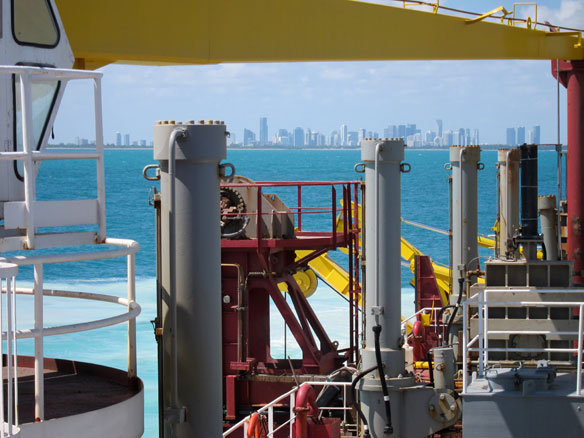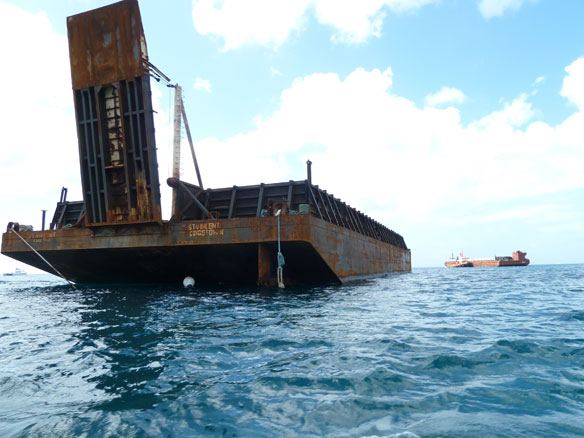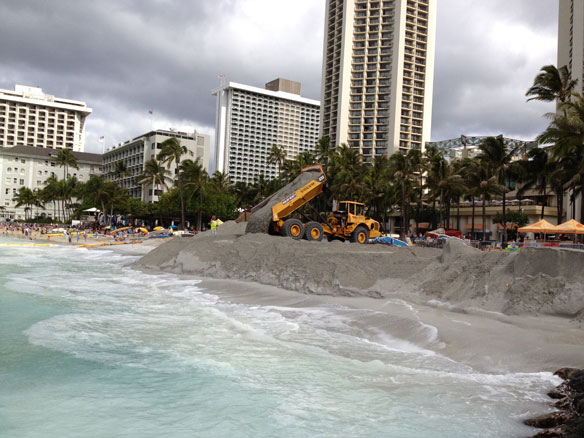Illegal beach scraping practices in Florida

Four beachfront homeowners are receiving warnings from state for removing sand from beach with machinery to create a “small frontal dune at the base of the original eroded dune.” The practice of ‘beach scraping’ was common during the early part of the 1900s, but improper practices eventually led to state regulation.
Factbox: Sifting Through U.S. Beach Sand Numbers

Here is a summary of what Florida and other coastal states and communities have been doing to protect and rebuild their shorelines based on to the American Shore and Beach Preservation Association (ASBPA) data.
Gone with the wind: storms deepen Florida’s beach sand crunch

Costs of so-called beach renourishments are a fraction of the total, measured in hundreds of millions of dollars, but the effort is crucial for Florida’s $67 billion tourism industry. And while sand needs are surging, there is not enough to go around.
King Tides, Beach Erosion and Water Pollution—Can Waikīkī Be Saved?

More than a century ago, Waikīkī was the center of government and culture for Hawaiians, where streams met the ocean and fishponds provided food. By the late 1800s, this stunning shoreline started to lure visitors, creating a demand for accommodations on the beach. This development, which included the construction of seawalls, groins and piers, prompted the eroding of the very beach that had been attracting tourists.
Shore towns use sand dredged from inlets to widen beaches

Coastal areas around the country are dredging clogged inlets to make them easier to navigate, and using the sand they suck from the bottom to widen beaches damaged by natural erosion or serious storms. Concerns that have arisen from inlet dredging include possibly disturbing wildlife habitat, or affecting the shape of nearby shorelines.
Life’s a beach: Cannes ships in sand for film festival

Every year the French Riviera town of Cannes rolls out the red carpet to A-list celebrities at the world’s most glamorous film festival. Now it wants to roll out a bigger beach too. The Mediterranean resort is shipping in 80,000 cubic meters of white sand – enough to fill 32 Olympic swimming pools – to widen the beach along a 1.4 kilometer (0.9 mile) stretch of seafront.
Did sand from Australia’s east coast get sent to Hawaii?

Is it true that back in the day, they used to mine sand at the beach?
Bahamas sand to fill in Florida beaches? Congress gave OK for study but no funding

The 2016 Water Resources Development Act authorized the Army Corps of Engineers to study using foreign sand, such as from the Bahamas, to widen shorelines without resorting to expensive and inefficient truck hauls from inland mines. A year later the study remains unfunded in the agency’s budget.
The sands of time

Human intervention to control beach depth is often futile. Repeated studies have found that sand pumped onto beaches in order to protect coastal property may be washed out by a storm or two. These beaches commonly lose all the new sand in five years or so.
